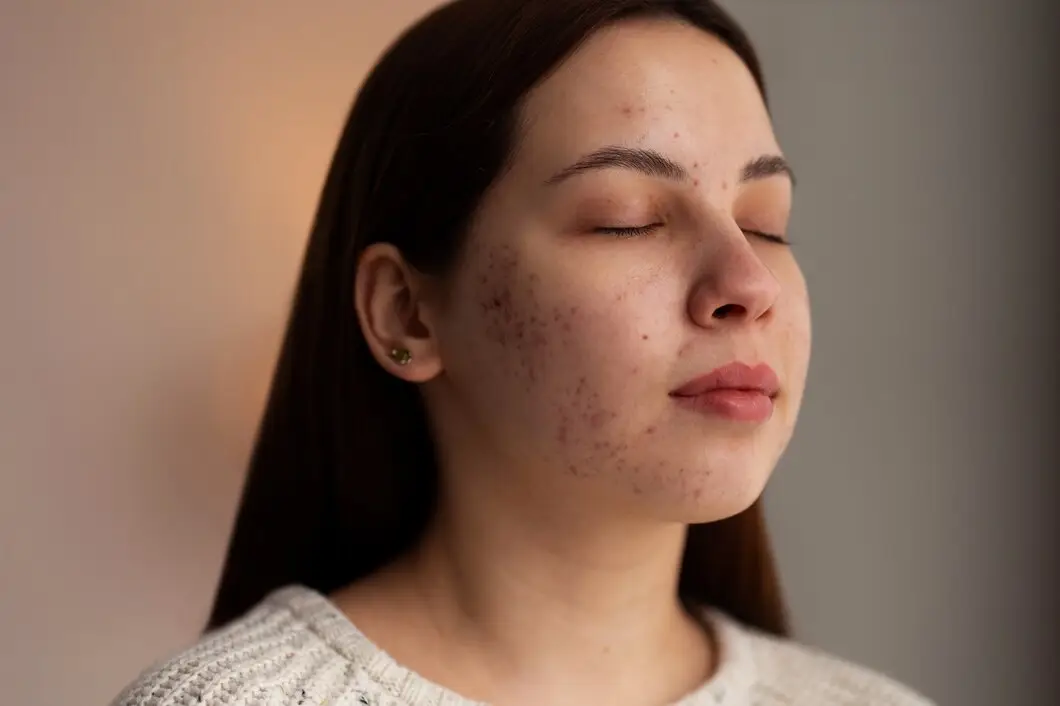5 Differences Between Fungal Acne and Breakouts: Recognize the Symptoms
Author: Nulook ExpertiseReview by: -Do you often experience small pimples that won’t go away? It could be fungal acne or breakouts, not just regular pimples. They may look alike, but they have different causes and treatments. If handled incorrectly, these skin problems could worsen. Let’s recognize the differences between fungal acne and breakouts so you can provide the right treatment!
Differences Between Fungal Acne and Breakouts
Before learning how to treat them, it’s important to understand the differences between fungal acne and breakouts in terms of their causes, symptoms, size, and treatment methods. Here are some key points that distinguish the two:
1. Causes
Fungal acne is caused by the overgrowth of the Malassezia fungus in hair follicles. This fungus thrives in environments that are overly moist, with excess oil production, or when using skincare products that aren’t suitable for the skin.
In contrast, breakouts occur when pores are clogged by dead skin cells, oil, and the Propionibacterium acnes (P. Acnes) bacteria. External factors like pollution, sweat, and inadequate skincare can worsen this condition.
2. Location on the Face and Body
Fungal acne is more likely to appear on areas of the body that sweat easily, such as the forehead, back, chest, and cheeks. This condition is often seen in people who are physically active or live in high-humidity environments. If left untreated, fungal acne can spread quickly, causing discomfort like itching and burning.
Breakouts tend to appear on the T-zone—forehead, nose, and chin. These areas are more prone to excess oil production compared to other parts of the face. Breakouts can also occur as a reaction to skincare or makeup products that aren’t suitable for your skin type.
Read Also: 5 Ways to Effectively Handle Breakouts
3. Symptoms
Fungal acne is characterized by small, red spots that are evenly spread and often accompanied by itching. The bumps are uniform in size and usually appear in clusters, resembling small pimples that won’t heal. If you use regular acne treatments like benzoyl peroxide or salicylic acid, the condition won’t improve because the cause is not bacteria, but a fungus.
On the other hand, breakouts have a rough texture and don’t always show inflammation. Breakouts can appear as closed comedones or small bumps that feel firmer than fungal acne. If left untreated, breakouts can develop into inflamed pimples that are harder to treat.
4. Size
Fungal acne typically has a uniform size, with small spots appearing in close clusters. Because it’s caused by a fungal infection, these spots can spread quickly, especially if the skin remains moist and untreated.
Breakout sizes vary, with some being small like comedones, while others can enlarge and turn into pus-filled pimples if infected by bacteria. Regular exfoliation can help speed up the healing of breakouts and prevent them from worsening.
5. Treatment Methods
One way to distinguish fungal acne from breakouts is by seeing how your skin responds to skincare products. Fungal acne won’t improve with regular acne treatments and might actually worsen when exposed to oil-based products or those containing fermented ingredients like galactomyces. Therefore, using antifungal products like ketoconazole can help treat this condition more effectively.
In contrast, breakouts usually improve with the use of BHA (Beta Hydroxy Acid) or AHA (Alpha Hydroxy Acid) products that help cleanse pores. Niacinamide is also effective in reducing oil production and gradually treating breakouts.
Read Also: 9 Ways to Treat Acne Face Easily
How to Prevent Fungal Acne and Breakouts
By taking the right preventive measures, you can reduce the risk of these skin issues and keep your skin healthy and free from small pimples. Here are some effective ways to prevent fungal acne and breakouts:
1. Use the Right Skincare Products
Choose non-comedogenic and oil-free skincare products to prevent pore blockages. Avoid oil-based products or those with excessive fermentation, as they can trigger fungal acne growth.
2. Cleanse Your Face Regularly
Wash your face twice a day with a gentle cleanser that suits your skin type. Using cleansers containing salicylic acid or sulfur can help control oil and remove dead skin cells that cause breakouts.
3. Avoid Excess Moisture on Your Skin
Fungal acne thrives in a moist environment, so make sure to keep your face dry and clean, especially after exercising or sweating. Shower and change clothes immediately after sweating to prevent fungal growth.
4. Pay Attention to Your Diet
Consume healthy foods rich in antioxidants and low in sugar. High-sugar foods and dairy products can worsen acne and increase oil production in the skin.
Read Also: Why Acne Keeps Appearing and How to Fix It
5. Exfoliate Regularly
Regular exfoliation helps remove dead skin cells and prevents clogged pores that cause breakouts. Use BHA or AHA exfoliators for deeper skin cleansing.
Fungal acne and breakouts are often mistaken for regular pimples, but they have different causes and treatments. By recognizing their differences, you can choose the right care to keep your skin healthy and free from skin issues.
Schedule a Salicylic Acid Peeling Treatment at Nulook
If you have persistent fungal acne or breakouts, a salicylic acid peeling treatment at Nulook could be the perfect solution. This Korean beauty clinic offers high-quality treatments with advanced technology and experienced medical professionals.
Salicylic acid peeling is a chemical exfoliation procedure effective for treating acne-prone and oily skin. The process helps remove dead skin cells, cleanse clogged pores, and reduce excess oil that often leads to acne.
Benefits of Salicylic Acid Peeling:
- Treats Acne and Excess Oil – Reduces excess oil and helps prevent new acne.
- Exfoliates Dead Skin Cells – Removes dead skin cells and blackheads for smoother and brighter skin.
- Speeds Up Skin Regeneration – Helps accelerate skin renewal and prevent breakouts.
- Brightens the Face – Removes dull skin and provides a natural brightening effect.
- Maintains Skin Hydration – Nourishes skin without leaving a sticky or oily feeling.
Get cleaner, healthier, and more radiant skin with a salicylic acid peeling treatment. This procedure helps stimulate the growth of new skin cells, resulting in smoother and brighter skin. Book your appointment and treatment at Nulook for healthy, acne-free skin!
References:
- https://my.clevelandclinic.org/health/diseases/24341-fungal-acne
- https://www.healthline.com/health/all-about-fungal-acne
- https://www.webmd.com/skin-problems-and-treatments/acne/what-is-fungal_acne


